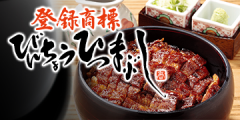- Home
- Sightseeing Spots
Sightseeing Spots
21 - 40 / 66 RESULTS
-
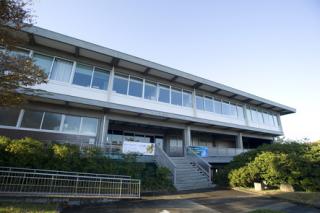
Eastern Area
Nagoya University Museum
Nagoya University Museum was established in April 2000 as the fifth integrated university museum in Japan. Its purpose is to comprehensively and internationally provide feedback, resources, and social return on the academic specimens and materials of Nagoya University, as well as the results of university research. It has six main missions: Research, Education for the Next Generation, Exhibitions, Creation and Inheritance of Knowledge, Specimen Collection, International Exchange, etc. See More
Nagoya University Museum was established in April 2000 as the fifth integrated university museum in Japan. Its purpose is to comp…See More
-
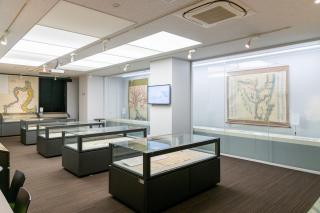
Eastern Area
Ogaki Kyoritsu Bank Takagi Family Documents Exhibition Gallery (inside Nagoya University Central Library)
The Ogaki Kyoritsu Bank Takagi Family Documents Exhibition Gallery is located in a corner of Nagoya University's Central Library, and as a permanent exhibit, it displays replicas of the Takagi Family Documents owned by Nagoya University (the establishment also holds special exhibits on other materials in the collection). The Takagi Family Documents are a collection of documents formerly owned by the Nishi Takagi family, a hatamoto clan whose fief was Tokigo and Tarago in Ishizu County, Mino Province (present-day Kami-Ishizu Town, Ogaki City, Gifu Prefecture), and some of them have been designated as Important Cultural Properties by the nation under the name "Kotai Yoriai Nishi Takagi Family-related Materials". There is no admission fee, and anyone can view them. You can also freely tour the Central Library by signing your name at the reception desk. See More
The Ogaki Kyoritsu Bank Takagi Family Documents Exhibition Gallery is located in a corner of Nagoya University's Central Library,…See More
-
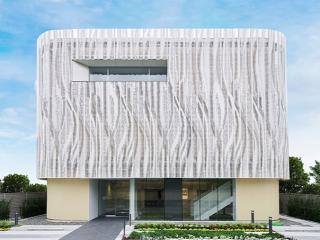
Eastern Area
Hoyu Hair Color Museum
Japan's first museum specializing in hair color, the widely known hair coloring company Hoyu opened the Hoyu Hair Color Museum as part of its 100th anniversary commemoration project. The museum highlights the culture and history of hair dyeing in Japan and Hoyu's history and involvement in the field. See More
Japan's first museum specializing in hair color, the widely known hair coloring company Hoyu opened the Hoyu Hair Color Museum as…See More
-

Eastern Area
Currently Closed
Mandolin Melodies Museum *closed
Records featuring mandolin music since 1920 and mandolins are displayed. Approximately 220 SP records, about 140 LP records, about 10 EP records, and approximately 400 CDs are displayed. Visitors wishing to listen to them can listen in the museum for a charge (SP: 300-yen, LP and CD: 100-yen). See More
Records featuring mandolin music since 1920 and mandolins are displayed. Approximately 220 SP records, about 140 LP records, abou…See More
-
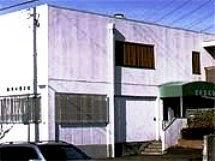
Eastern Area
Araki Shuseikan Museum
In 1952, Araki Minoru, a junior high school teacher at the time, began his journey into archaeology when one of his students discovered a single piece of pottery. Motivated by this find, he took it upon himself to establish a museum. The museum, called "Touzan Ancient Kiln Site Group," proudly exhibits excavated artifacts from archaeological sites in Chikusa, Showa, and Tempaku wards in Nagoya, in a permanent exhibition on the second-floor gallery. Additionally, on the first floor, they regularly host three annual exhibitions, each lasting four months, showcasing a various range of individual collections. See More
In 1952, Araki Minoru, a junior high school teacher at the time, began his journey into archaeology when one of his students disc…See More
-

Eastern Area
Yokoyama Art Museum
Opening October 1, 2017 in Higashi-ku, Nagoya. Find pottery and ceramics made for export during the Meiji and Taisho eras displayed, with a focus on items returning back home to where they were made. You can view a number of dramatic pieces with awe-inspiring detail such as pieces made in the Nagoya area for export, old Noritake pieces which are the first western-style pottery and ceramics of Japan, and rarely viewable Sumida-yaki gathered up by type. See More
Opening October 1, 2017 in Higashi-ku, Nagoya. Find pottery and ceramics made for export during the Meiji and Taisho eras displa…See More
-

Eastern Area
War and Peace Museum: Peace Aichi
War and Peace Museum: Citizen-Operated This museum was established and is operated by citizens with the aim of learning, preserving, and taking action against wars for the sake of future peace. It was opened in 2007. With approximately 5400 wartime materials donated by citizens, the museum features permanent and special exhibitions, as well as events such as war survivors' narratives, recitals, and lectures. It serves as a museum-level facility dedicated to promoting peace and war education. See More
War and Peace Museum: Citizen-Operated This museum was established and is operated by citizens with the aim of learning, preserv…See More
-

Eastern Area
Water History Museum
The Water History Museum is a place where you can easily learn about the history, role, and disaster prevention aspects of Nagoya's water supply and sewerage projects. It was established to commemorate the 100th anniversary of Nagoya City's water supply and sewerage business. The museum houses over 800 exhibits, showcasing historical materials and items related to Nagoya's water supply and sewerage projects. The friendly museum staff offer guided tours and organize seasonal events for visitors to enjoy. By visiting the museum, you can gain a clear understanding of the development and significance of Nagoya's water infrastructure and its essential role in disaster preparedness. If you're interested in learning about the history of Nagoya's water supply and sewerage, as well as its contribution to disaster prevention, the Water History Museum is the perfect place to explore. See More
The Water History Museum is a place where you can easily learn about the history, role, and disaster prevention aspects of Nagoya…See More
-

Eastern Area
Bunkanomichi Hori Museum
The Horikawa Museum is an art museum that opened in June of the 18th year of the Heisei era (2006) to showcase the collection of Makoto Hori, the founder of the Daito Tech Group. The museum mainly exhibits works by artists from the "Era of Passionate Art," who studied in Paris during the early Showa period and made efforts to create a Japanese-style Western painting. The museum displays masterpieces by representative artists of modern Japanese painting who were active in the Showa era, as well as contemporary art pieces. See More
The Horikawa Museum is an art museum that opened in June of the 18th year of the Heisei era (2006) to showcase the collection of …See More
-

Eastern Area
Showa Museum of Art (Goto Hoon Association Public Interest Incorporated Foundation)
A quiet tea ceremony implement museum with a lush, green garden Showa Museum of Art opened in 1978 as a private-collection museum. This natural-forest garden in a peaceful neighborhood in the east of Nagoya is home to the sukiya-style Nanzanjuso (an Aichi Prefecture designated cultural property), a former samurai villa that was relocated there in 1935. The tea ceremony room within is called Nejikago no Seki, and is opened up for guided visits about 10 times a year (reservations required). See More
A quiet tea ceremony implement museum with a lush, green garden Showa Museum of Art opened in 1978 as a private-collection m…See More
-

Eastern Area
Kuwayama Art Museum (Kuwayama Seizan Association Public Interest Incorporated Foundation)
Kuwayama Art Museum was opened in 1981 with the donation of the first curator Seiichi Kuwayama's lifelong collection of artworks and craft pieces. The collection is based around contemporary Japanese paintings and tea ceremony implements from the Kamakura period to the modern day, so the exhibition is changed three times a year, focusing on Japanese paintings in the spring and tea ceremony implements in the fall. The small tea room called Seizan in the garden, the Borokaku hall on the second floor of the main building, the table tea ceremony room on the second floor of the annex building, and the multipurpose hall on the first floor of the annex building are all available for use by the public. See More
Kuwayama Art Museum was opened in 1981 with the donation of the first curator Seiichi Kuwayama's lifelong collection of artworks …See More
-

Eastern Area
Furukawa Art Museum and Tamezaburo Memorial Hall
Sukiya-style architecture and art Furukawa Art Museum was opened in November 1991 to display art collected over many years by the first curator, Tamezaburo Furukawa (1890-1993). The art was donated with the wish that it would be enjoyed by many people, not just shut away in a private collection. The collection totals about 2,800 items, with a focus on contemporary Japanese painting. It also includes oil paintings, ceramics, crafts, a 15th century illustrated manuscript, and more. Currently, various educational activities, such as art lectures and workshops, are also available in addition to the exhibition of the collection. In November 1995, Tamezaburo's private residence was opened up to the public as the Tamezaburo Memorial Hall, in accordance with his wish for it to be a place of relaxation for everyone. Six buildings from the Tamezaburo Memorial Hall built in 1934, including … See More
Sukiya-style architecture and art Furukawa Art Museum was opened in November 1991 to display art collected over many years by …See More
-

Eastern Area
Temporary Closure
Nagoya City Museum
A museum of historical objects from the Owari region, with a focus on Nagoya A museum of historical objects from the Owari region, with a focus on Nagoya. The permanent exhibition hall gives an introduction to history from the Paleolithic Age to the present day. Many of the materials come from 24,000 or so donations from citizens, and there are over 270,000 artifacts in total in the collection. The special exhibition hall holds about five exhibitions every year, including special exhibitions on Cultural Heritage inside and outside Japan, and temporary exhibitions on the history and culture of the Owari region. There are also various events like lectures and workshops planned for visitors to the museum. In front of the museum there is a Japanese-style garden that can be enjoyed in every season. There is an auditorium on the basement 1st floor and a gallery on the 3rd floor that are op… See More
A museum of historical objects from the Owari region, with a focus on Nagoya A museum of historical objects from the Owari reg…See More
-
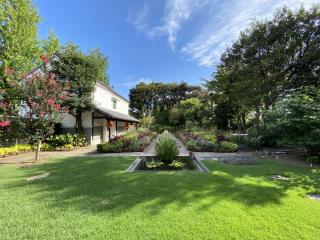
Eastern Area
Cultural Path Hyakka Hyakuso
The building, consisting of a study, tea room, and storehouse constructed in the 9th year of Taisho era (1920), underwent renovation, and a multipurpose hall was newly built. The facility was opened in April of the 19th year of Heisei (2007). The garden, named after the "Hyakka Hyakusai Zu Byobu" (Important Cultural Property) held by the Tokugawa Museum, offers enjoyment throughout the four seasons. In the hall, visitors can relish tea and piano performances while gazing at the garden. See More
The building, consisting of a study, tea room, and storehouse constructed in the 9th year of Taisho era (1920), underwent renovat…See More
-
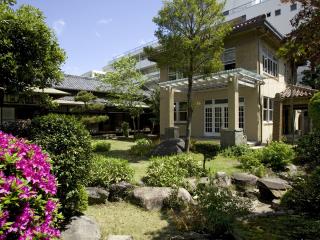
Eastern Area
Cultural Path Shumoku Museum
A building that lives on through the changing times, with an unchanging charm The former residence of ceramics merchant Tamesaburo Imoto was built between the end of the Taisho period and the beginning of the Showa period. Japanese- and Western-style buildings are preserved on the grounds, along with two storehouses—one in the west and the other in the east—a tea room, and a garden. The residence is designated as a tangible cultural asset of the City of Nagoya and a building of scenic importance. See More
A building that lives on through the changing times, with an unchanging charm The former residence of ceramics merchant Ta…See More
-
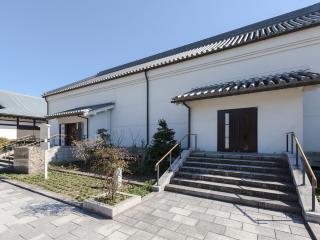
Eastern Area
Nagoya City Hosa Library
Hosa Library is an open archive where excellent Japanese and Chinese classics originally owned by the Owari Tokugawa family are stored. In the reading room, the library's collection of books is available, a portion of which can be copied. Exhibitions to introduce early-modern samurai culture including the knowledge and culture of samurai families are held. In addition, temporary lectures are held in cooperation with Tokugawa Art Museum or Tokugawaen. The new building was opened in November 2004. See More
Hosa Library is an open archive where excellent Japanese and Chinese classics originally owned by the Owari Tokugawa family are s…See More
-
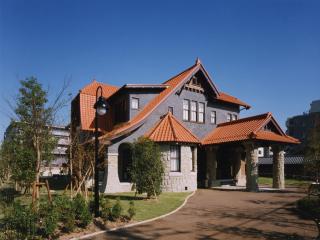
Eastern Area
Cultural Path Futaba Museum
Cultural Path Futaba Museum—a museum full of Taisho period romanticism The residence of Sadayakko Kawakami, "Japan's first actress," and Momosuke Fukuzawa, "the king of electric power." This Taisho-era manor built in a semi-European style was called Futaba Palace, and the restored grounds are quite resplendent. In addition to the displays of Sadayakko's personal effects and literary materials, the stained glass windows in the main hall are a must-see! See More
Cultural Path Futaba Museum—a museum full of Taisho period romanticism The residence of Sadayakko Kawakami, "Japan's first a…See More
-

Southern Area
Chiyokura Memorial Museum
See More
See More
-
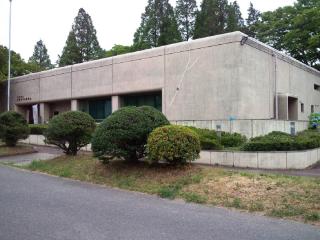
Southern Area
Nagoya City Miharashidai Archaeological Museum
This is a museum specializing in archaeology. It is located on the ruins of Miharashidai, which is known as a moat village of the late-Yayoi era. In addition to the ruins of Miharashidai, the museum contains: an exhibition room where archaeological finds of Nagoya are exhibited, the habitation site observation building, and a moat observation corner. In summer, excavation and investigation open to citizen participation are conducted. See More
This is a museum specializing in archaeology. It is located on the ruins of Miharashidai, which is known as a moat village of the…See More
-
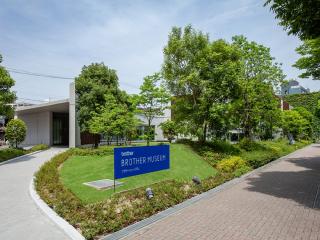
Southern Area
Brother Museum
An experiential and display museum for discovering the lineage of manufacturing Brother Museum has a Communication Hall, Product Zone, History Zone, Sewing Machine Zone, and Library. Such products as inkjet or laser printers, fax machines, home sewing machines, industrial sewing machines, electronic stationery and online karaoke systems are on display. ・The museum is home to one of the finest collections of sewing machines in Japan. The collection includes a replica of the first sewing machine in the world, antique sewing machines from overseas, iconic Brother machines, and more. ・Have fun with the latest Brother products. Try out the latest Brother technology by making sewing machine embroidery, creating name stickers and paper crafts, printing photos, and more. See More
An experiential and display museum for discovering the lineage of manufacturing Brother Museum has a Communication Hall, Pro…See More













